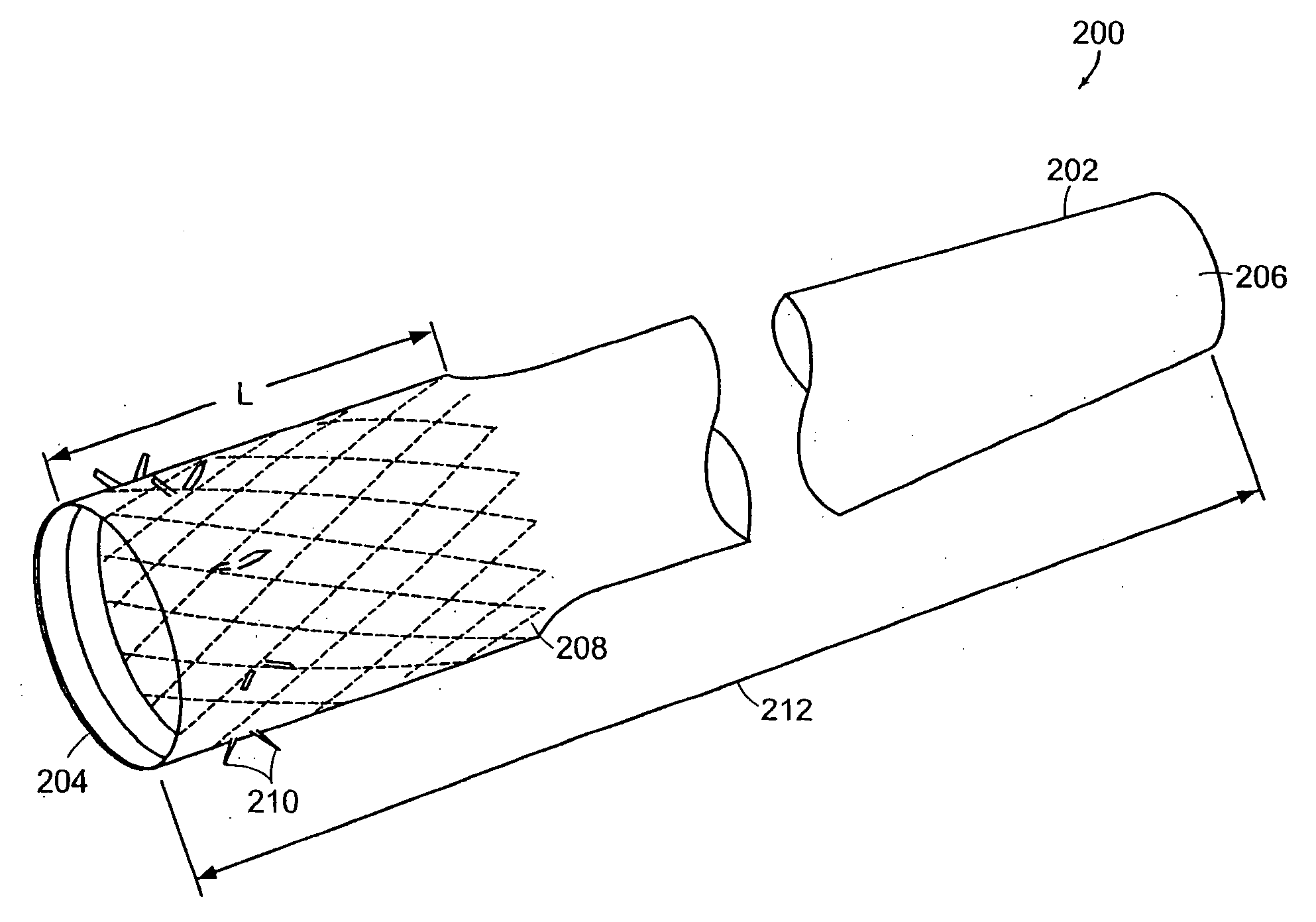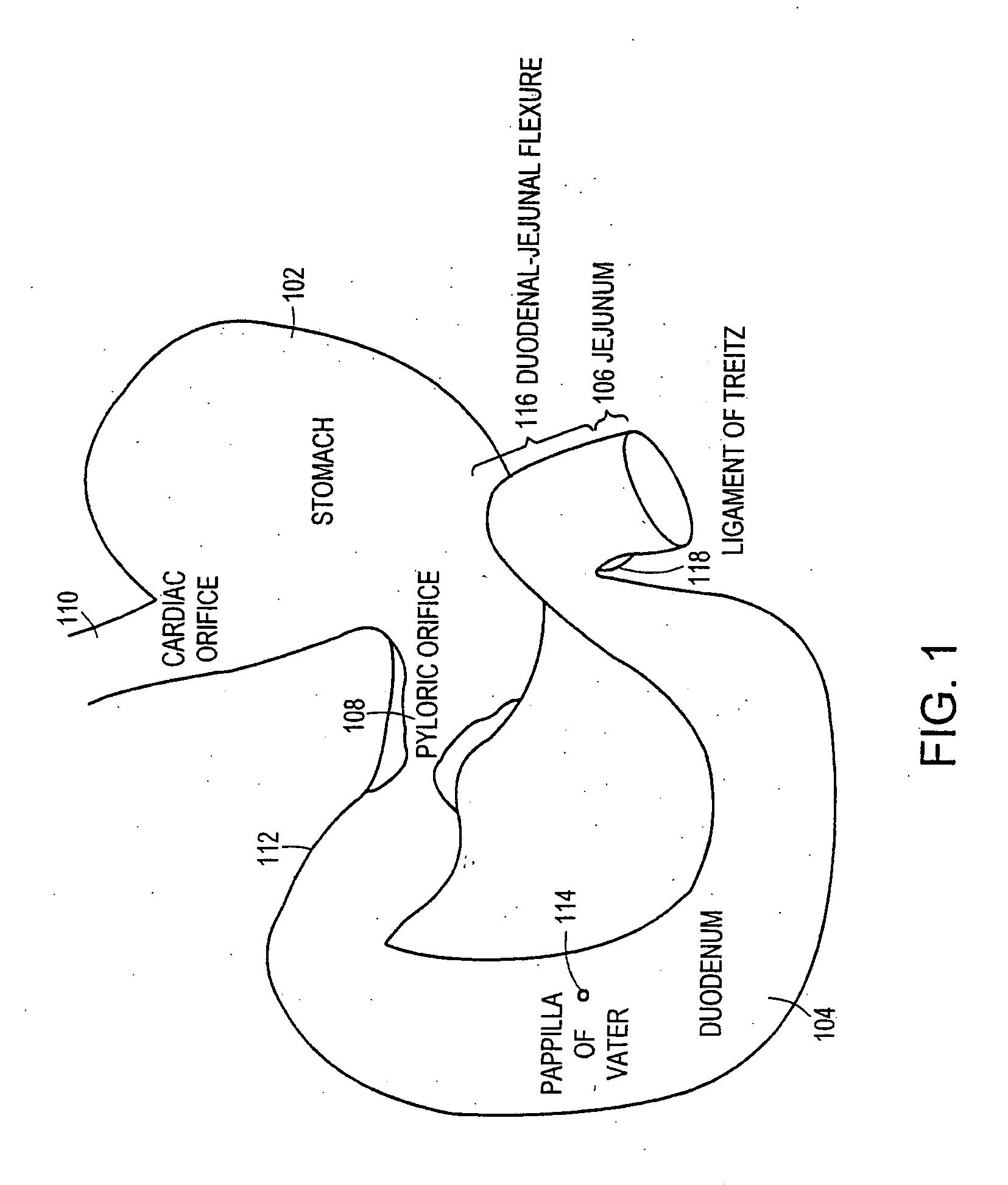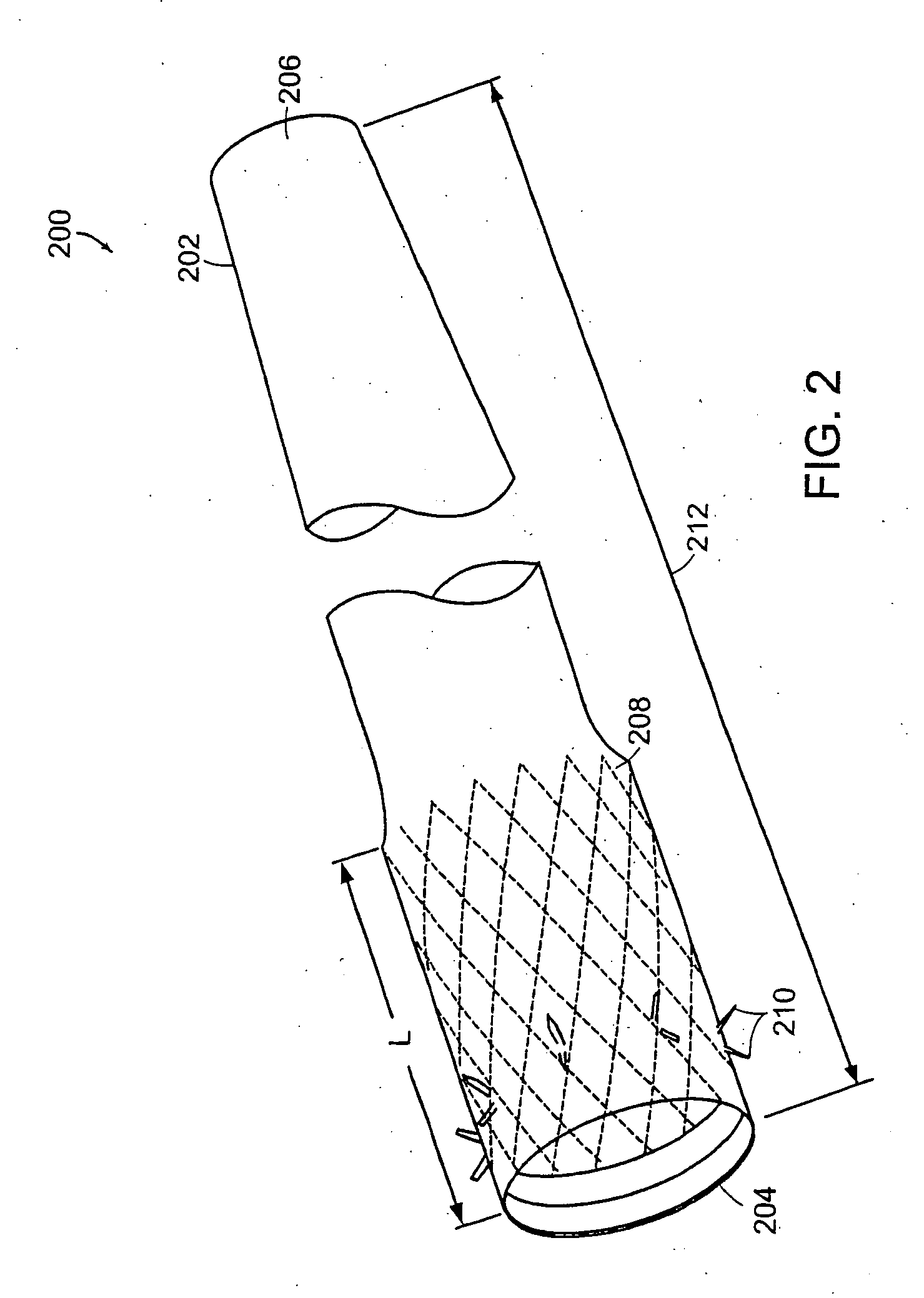Bariatric sleeve
a sleeve and sleeve technology, applied in the field of bariatric, can solve the problems of increasing the prevalence of obesity at alarming rates, affecting the health of patients, and affecting the quality of life of patients, so as to promote axial stability, promote stable anchoring, and reduce movement.
- Summary
- Abstract
- Description
- Claims
- Application Information
AI Technical Summary
Benefits of technology
Problems solved by technology
Method used
Image
Examples
Embodiment Construction
[0062] A description of preferred embodiments of the invention follows.
[0063]FIG. 1 is a sectional view of a portion of the digestive tract in a body. Food to be digested enters the stomach 102 through the cardiac orifice 110 from the esophagus. Chyme, a semi-fluid, homogeneous creamy or gruel-like material produced by gastric digestion in the stomach exits the stomach through the pyloric orifice (pylorus) 108 and enters the small intestine 112. The pylorus 108 is a distal aperture of the stomach 102 surrounded by a strong band of circular muscle. The small intestine, about nine feet in length, is a convoluted tube, extending from the pylorus to the ileo-caecal valve where it terminates in the large intestine. The small intestine has three sections, the duodenum 104, jejunum 106 and the ileum (not shown). The first eight to ten inch section of the small intestine, the duodenum, is the shortest, widest and most fixed part of the small intestine.
[0064] The duodenum has four sections...
PUM
 Login to View More
Login to View More Abstract
Description
Claims
Application Information
 Login to View More
Login to View More - R&D
- Intellectual Property
- Life Sciences
- Materials
- Tech Scout
- Unparalleled Data Quality
- Higher Quality Content
- 60% Fewer Hallucinations
Browse by: Latest US Patents, China's latest patents, Technical Efficacy Thesaurus, Application Domain, Technology Topic, Popular Technical Reports.
© 2025 PatSnap. All rights reserved.Legal|Privacy policy|Modern Slavery Act Transparency Statement|Sitemap|About US| Contact US: help@patsnap.com



